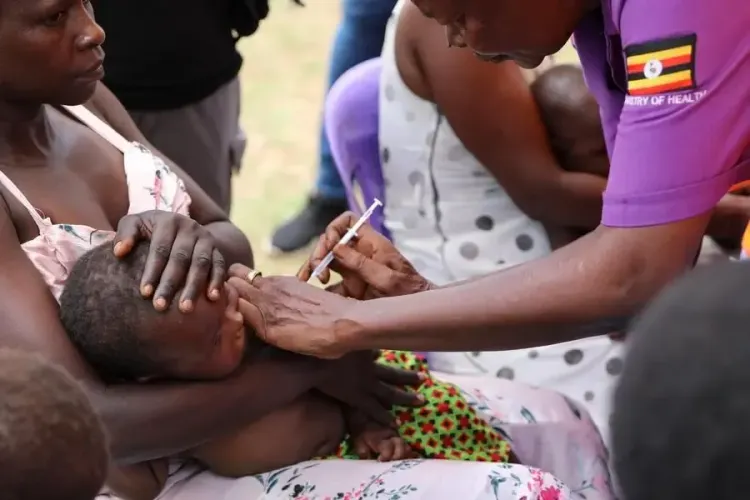Uganda Commences Mass Yellow Fever Vaccination in Eastern Region Following Outbreak

Synopsis
Key Takeaways
- Mass vaccination against yellow fever initiated in Uganda.
- Targets 4.3 million individuals across 19 districts.
- Vaccination includes children and adults aged 12 months to 60 years.
- Campaign spans six days at schools and health centers.
- Yellow fever is a mosquito-borne disease that requires vaccination.
Kampala, April 11 (NationPress) Uganda has initiated a mass vaccination campaign against yellow fever in the eastern region following the confirmation of six cases, according to a health official.
The campaign, which commenced on Thursday, aims to immunize 4.3 million individuals across 19 districts, as stated by Fred Nsubuga, a senior medical officer at the Uganda National Expanded Programme on Immunisation.
Nsubuga informed Xinhua that this vaccination initiative, taking place at selected schools and health facilities, is designed for both children and adults aged from 12 months to 60 years.
Rachael Nakawala, a nurse in the Kaliro district, reported that immunization activities have begun in various schools within the district, as noted by Xinhua news agency.
“We initiated the vaccination on Thursday, targeting students in several designated schools,” she mentioned to Xinhua.
“We will proceed to additional schools tomorrow and subsequently visit health centers over a span of six days.”
The World Health Organisation states that yellow fever is a mosquito-borne, epidemic-prone disease that can be prevented through vaccination, transmitted to humans via bites from infected mosquitoes. The causative agent is an arbovirus (a virus spread by vectors like mosquitoes, ticks, or other arthropods), typically spread by infected Aedes and Haemagogus mosquitoes.
These mosquitoes can breed in domestic settings, forests, or jungles, and can pose a significant risk as yellow fever is a high-impact, high-threat disease with potential for international spread, threatening global health security.
The incubation time for yellow fever ranges from 3 to 6 days. Many infected individuals may show no symptoms. Common signs include fever, muscle aches, headaches, loss of appetite, nausea, or vomiting. Symptoms usually resolve after 3 to 4 days.
A small fraction of patients may enter a more severe, toxic phase within 24 hours after recovering from initial symptoms. In this phase, high fever returns, impacting multiple body systems, particularly the liver and kidneys. Symptoms may include jaundice (yellowing of the skin and eyes, hence the name yellow fever), dark urine, and abdominal pain with vomiting. Hemorrhaging may occur from the mouth, nose, eyes, or stomach, with a mortality rate of 50% for those entering the toxic phase within 7 to 10 days.
Currently, there is no specific antiviral treatment for yellow fever. It is advised for patients to rest, maintain hydration, and seek medical assistance.









